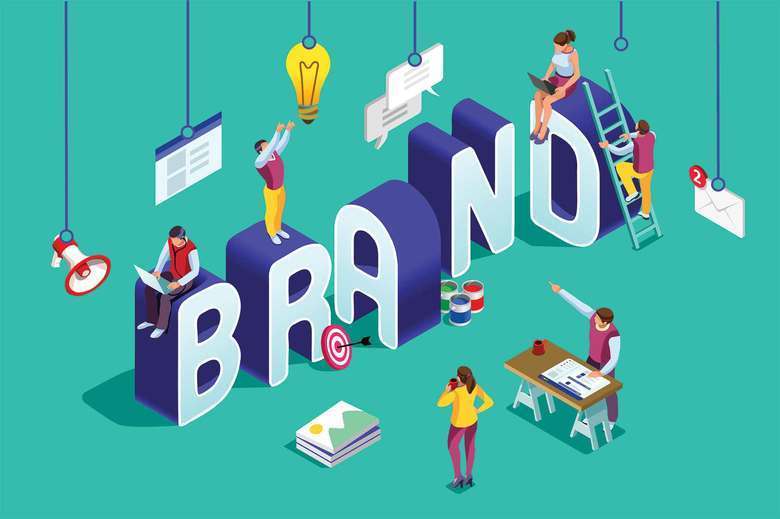Today, a strong employer brand is seen as a critical way to attract, engage, and retain the best people. At a time when top talent is highly mobile, those are certainly laudable goals. But is building a special, separate employer brand the way to achieve them? No.
The problem with most employer branding is that it is disconnected from the corporate brand and the core drivers of the business. It is typically managed by the HR department and too often becomes associated with superficial perks, such as free lunch or unlimited vacation. In the United States alone, there are now more than 40 consultancies focused on employer branding, usually separate from any larger strategic purpose. The consequences can be dismaying.
Consider the global car rental company that describes to potential employees why a job will develop their skills — but not how it will benefit customers or the business. A tech firm, featured in one of the employer brand consulting websites, promotes Friday happy hours as a core attribute. And there is a major business consulting firm that advertises itself to new recruits with quotes and photos of current employees saying things like “my coworkers make every meeting seem like a party.”
Based on our experience with hundreds of organizations as both executives and advisers, we believe what has been called “the employer brand” should in fact grow out of the established company brand. To encourage this integration, we advocate abolishing the “employer brand” label and focusing instead on building out a talent dimension as a key part of the corporate brand. We recommend a three-step process, led by the CEO and the executive team — not delegated to lower-level HR or communications people.
First, create a talent framework that lays out the key qualities, behaviors, and motivations C-suite managers want to see in their work force, so the company can deliver on its total brand promise. For example, an ophthalmology company that we advised sought to change its profile from “technical excellence in optics” to “improving customers’ quality of life.” We helped its leaders revamp their key talent criteria from mainly technical skills to also include teamwork, empathy, and an external focus.
At a global nonprofit client, the CEO asked hundreds of the employees to help identify key team behaviors that would resonate with stakeholders, including “placing commitment above contribution” and “focusing on relationships, not just communication.” These characteristics became fundamental elements of the new organizational brand.
Next, validate the talent framework. Customer-facing workers have the best understanding of their needs and how work really gets done. Key questions in focus groups and on questionnaires for these employees should include: “Does this capture capabilities critical to our success?,” “How do you think prospective hires will react?” and “Do our values come across clearly?”
It’s also important to ask employees for candid feedback about what needs to change in the organization for it to retain, motivate, and attract the best people over the long term. With the right prompts, you can gain meaningful insights. For example, asking a focus group the open-ended question, “What’s the worst aspect of our culture?” may result in silence. Saying something like “A survey seems to indicate that half of your colleagues feel they are not encouraged to speak up about problems — why do you think that may be so?” is likely to generate richer responses.
A major challenge is learning how well the talent framework resonates with potential hires. It’s sometimes hard to get beyond obvious attractions like ample paid time off. One effective approach is to reach out to new employees, asking them to assess important areas such as the company strategy, sense of purpose, and quality of customer service, as if they were still looking at the organization as a potential place to work. Another option is to work with recruiters to consolidate candidate feedback and to ask for their own professional assessments.
This process delivers a reality check and upgrades on the talent framework. For example, the CEO of a global industrial company was taken aback by employee comments about how negatively some customers regarded the company’s service, and she was also impressed by the front-line workers’ recommendations on what to do about it. She used those insights to refine her talent framework to focus on more relevant capabilities.
The final step is to fully embed the talent framework into the business. This means incentivizing the right behaviors so that potentially abstract qualities, such as “teamwork,” are assessed and rewarded. For example, a recent global technology client wanted “ownership” to become core to the company; we helped drive this through behavior change, performance KPIs, and a culture campaign with a handbook centered on what ownership means for each employee.
This work will be led by the brand team. But to make it stick, it must be owned by the CEO. As any good leader knows, their most important job is attracting, retaining, and advancing the best people. Integrating talent into the center of the corporate brand, rather than spinning out a separate employer brand, is the best way to do that.
By Ken Banta & Michael Watras
Source

